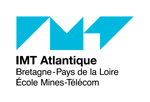Decoupling free chloride and water ingress in concrete by a dielectric resonant sensor
Résumé
The origin of rebars corrosion in concrete infrastructures is frequently associated with the ingress of chloride ions present in water. This is particularly the case of infrastructures located in marine environments or exposed to deicing salts. The present study aims at developing a radio-frequency dielectric sensor dedicated to free chloride ingress monitoring in a well-defined volume of the material. A resonant method operating in a wide frequency range is selected to separate the effects associated with the variation of the real part of the dielectric permittivity and tangent loss. As it will be shown, the method provides useful information on the presence of free chloride in concrete and can be used for the monitoring of chloride diffusion. For this purpose, considering the variation of the transmission parameter S12 value presents clearly some advantages with respect to the frequency shifts of resonances. This allows to decouple water and chloride content.
